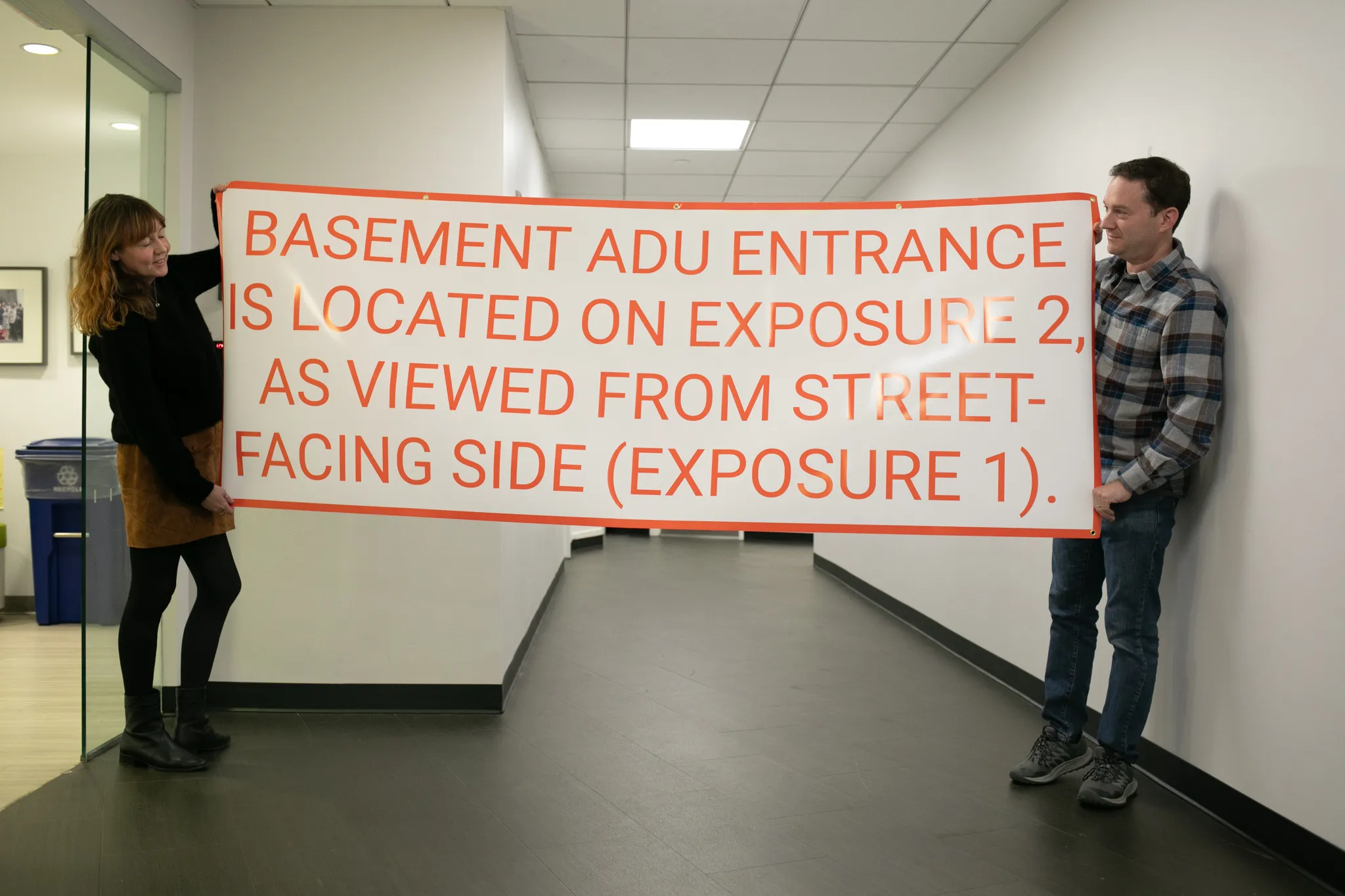Last Week's Biggest Sales
1. CARROLL GARDENS $1,675,000 32 1st Place GMAP This 20’x55′ 4-family brownstone hit the market in October, priced at $1,890,000. According to its listing on StreetEasy, it “needs renovation” but has a lot of original touches intact: “The garden level has original tin ceilings. The Parlor Floor has a huge front parlor and rear parlor…


1. CARROLL GARDENS $1,675,000
32 1st Place GMAP
This 20’x55′ 4-family brownstone hit the market in October, priced at $1,890,000. According to its listing on StreetEasy, it “needs renovation” but has a lot of original touches intact: “The garden level has original tin ceilings. The Parlor Floor has a huge front parlor and rear parlor with pocket doors, pier mirrors, marble mantels and gorgeous original detail. The third and fourth floors have tin ceilings and marble mantels. In addition there is a fifth floor, but it is not full ceiling height.” Entered into contract on 1/14/10; closed on 3/12/10; deed recorded on 3/22/10.
2. CARROLL GARDENS $1,475,000
348 Sackett Street #2 GMAP
Located in the 5-story elevator building at 348 Sackett Street, this 3-bedroom, 2-bathroom, 1,839-sf condo has white oak hardwood floors and an open kitchen, says its listing on Streeteasy. Entered into contract on 11/4/09; closed on 3/18/10; deed recorded on 3/26/10.
3. CARROLL GARDENS $1,475,000
348 Sackett Street #3 GMAP
Just like the 348 Sackett Street condo above, this one’s got 3 bedrooms, 2 bathrooms, and 1,839 sf. Entered into contract on 8/9/09; closed on 3/17/10; deed recorded on 3/26/10.
4. DUMBO $1,425,000
100 Jay Street, #23H GMAP
This 1,592-sf condo has 3 bedrooms, 2 bathrooms, and 1 half bath. According to StreetEasy, it was listed at $1,575,000 in February ’09, and in June ’09, the price decreased by 5% to $1,499,000. Entered into contract on 2/16/10; closed on 3/12/10; deed recorded on 3/23/10.
5. MANHATTAN BEACH $1,200,000
177 Kensington Street GMAP
According to PropertyShark, this 2-story, 2,378-sf, 1-family home with a garage is located on a 6,000-sf lot near Manhattan Beach Park. Entered into contract on 10/14/09; closed on 3/18/10; deed recorded on 3/25/10.
Photos from Property Shark and Development Watch.





this will warm your heart, bho, but perhaps you run this asylum?
http://fame.org/HTM/FAME%20Fact%20Sheet%204-6-05.htm
Why not?
***Bid half off peak comps***
Holding cash is not committing to a view of the market.
be rude – I’ll leave you with this quote from the article linked below as balance sheet games are definitely not a difference between then and now (how the hell do you valuate equities anyway given the expose, i.e. Repo 105, on these balance sheet games?).
“Beauty is only skin deep. In some cases, there may not be anything there at all.”
Is There a Lehman Lurking on Wall Street? [What’s in YOUR portfolio?]
http://tinyurl.com/ygdqml4
***Bid half off peak comps***
“you actually don’t commit any capital to your views”
Wrong. How is cash NOT capital? During deflation, it effectively returns dividends even while under a mattress! I own some gold and equities just to hedge but in my opinion, those markets will crash further with RE. We’re both regurgitating rhetoric but whether I’m wrong remains to be seen.
“The Fed actually stood by as money supply _contracted_ at the beginning of the Great Depression.”
That’s just one side of the debate, the Monetarist view (Bernanke’s school of thought). I’m with the Austrian school who thinks the Fed stood by because they knew there was absolutely nothing they could do. Debt became parabolic during the 1920’s and the Fed acted too late to control it. The Great Depression, therefore, was inevitable and government efforts elsewhere prolonged it. De jevu.
“Why, exactly, will today be the same as April 1930 when the two situations are vastly different?”
They’re not vastly different. Negative savings rate, mark-to-fantasy accounting, massive credit expansion/contraction and double-digit unemployment. You can get lost in the details all you want but it boils down to unsustainable debt levels and insolvency. The debt and inventory of properties need to clear and this cannot happen without mark-to-an-unforgiving-market. Foreclosures, writedowns, bank failures, bankruptcies, you name it.
***Bid half off peak comps***
be rude,
Of course the trade deficit is lower than the pre-crisis years. We crashed and are now deflating.
If our services and tech sectors are that strong and robust, then why do main stream economists insist that an economic recovery relies on housing? These sectors were supported by consumer spending fueled by home sales, HELOCS, derivatives, equities, etc. It was a Ponzi scheme that fed on itself. Housing WAS and STILL IS the economy (the real one, not the stock market). That’s why everybody’s watching it. Nothing has replaced it as the driver.
You’re sounding like David Lereah, “RE is local”. Our banks are centered here so problems in Las Vegas and SoCal come back home to roost. You think the demise of Countrywide didn’t affect Wall St? Then you have these debt problems all over the world, from California to Dubai to Greece and the other PIGS, and then back here in NY State. The global economy is one pie from which we all take slices. When it slips, we all slip until the next world war (God forbid).
***Bid half off peak comps***
BHO, before (again) attempting to rebut your argument, let me clarify one thing. While I’m bullish now (and ideed have been for over a year…), I acknowledge that the economy is not out of the woods yet and there are plenty of things that can derail the recovery. That’s the fundamental difference between you and me: you stubbornly cling to your views despite mounting contradictory evidence; I am willing to change mine — as any good trader is — as the information changes. If I see reason to go short, I’ll be right there with you, buddy. I’ll be far from MIA, I’ll be making money just as I was in 2008 (with a bearish stance) & 2009 (with a bullish stance). Begs the question, though, how you’re not already MIA given that you’ve been so wrong for the past year. Probably because you actually don’t commit any capital to your views (if you did, you’d have lost it by now…), you just regurgitate rhetoric.
Anyhow, there is one HUGE difference between today & the Great Depression. The Fed actually stood by as money supply _contracted_ at the beginning of the Great Depression. This is exactly the wrong thing to do, as any college freshman with Econ 101 under their belt would know. You state a bunch of steps taken to stabilize things in this crisis, which I do view as positive differences (although reasonable folks can disagree about how much stabilization was needed, and in what form…), but you ignore the single most important difference: proactive monetary policy vs. destructive monetary policy.
Your argument that simply because there was a market reversal in April 1930 there will be one today is still weak and half-baked. Why, exactly, will today be the same as April 1930 when the two situations are vastly different? Just because you think it will isn’t reason enough, in fact it’s not a reason at all…
No, be rude, it’s strong like an ox.
“(b) it hasn’t”
Yet. Like in April 1930. By the time it does, you’ll be MIA.
“the deeper the crash, the sharper the recovery”
See your (b).
“There are fundamental differences in steps taken to mitigate this crisis when compared with the Great Depression.”
I didn’t ignore these differences. In fact I stated them:
*worthless MBS purchases (HELOCS on top of underwater mortgages) by the FED (substantial difference)
*$700B bailout, the largest in modern history
*Foreclosure moratoriums (since when were you able to stay in “your” house for a year or more in default?)
Not too many differences though. Suspension of mark-to-market accounting was prevalent in the 1930’s too (and Lehman, and Iceland, and Enron, and Worldcom, etc). Also, like they’re bulldozing properties in Detroit under the guise of unsafe, dilapted condtions and squalor, they destroyed crops during the 1930’s to manipulate inventory. So, in a sense, the more things change the more they stay the same.
However, none of the above have mitigated anything. The unsustainable debt levels were/are still there/here and had/have to clear through foreclosures and bank seizures.
Please give me more differences between what we did then and what we did now and how it has mitigated ANYTHING meaningful besides the fate of stock prices and bonuses (albeit temporarily).
***Bid half off peak comps***
>> if we could identify a real economic driver that we produce and export, I’d say the market was probably turning around.
Could the economy be more balanced? Sure. Would it hurt us to have a smaller trade deficit? Of course not (Although the trade deficit is already much lower than it was in the pre-crisis “boom” years…). But quotes like the one above show really naive, head-in-the-sand thinking.
I can see how, on a very basic level, one can pander to the masses by pointing out we don’t export as many Chevy cars or textiles as we used to. But understand, this isn’t a bad thing: our economy has moved up the value chain … services are a far bigger component of our economy than manufacturing.
Even so, manufacturing is not dead in the U.S.: Boeing is one of the few major plane manufacturers in the world; Caterpillar heavy equipment is powering the infrastructure boom (not to mention helping with commodities mining) around the developing world. The list goes on.
The economic drivers of our recovery are our robust tech and services sectors, which make up the bulk of the economy. But we have some pretty decent industrial firms as well.
Overhanging housing inventory in Las Vegas and SoCal is a drag for sure, but let’s not make the naive assumption that persistent housing problems in a few markets are going to derail the entire economy, or Brooklyn real estate for that matter…